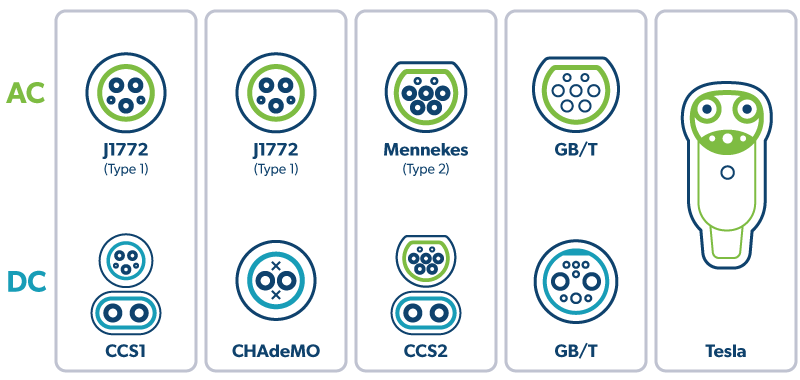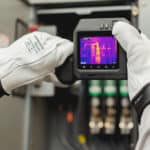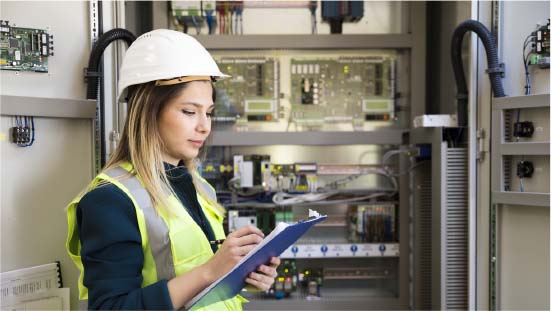The chicken and the egg metaphor perfectly sums up the current state of the electric vehicle (EV) mass market in the United States. What should come first, increasing the demand for electric vehicles or expanding the availability of public charging stations?
The United States is home to one of the most extensive road systems globally, inherently presenting logistical challenges for the implementation of a cross-country electric vehicle charging station (EVCS) network. It is estimated that there are more than 150,000 fueling stations in the U.S. and only 43,000 public EVCS, which are heavily concentrated in specific geographic locations.
How can the U.S. increase demand for electric vehicles?
So the question remains, how can the U.S. increase demand for electric vehicle sales while implementing the necessary EVCS infrastructure? The first step is to understand what is bottlenecking the electric car market.
Easing the Bottleneck in American EV Charging Stations
“Range anxiety” describes a driver’s fear of being stranded due to insufficient fuel to reach a destination. Whether driving a gas or an electric vehicle, long road trips require a tank fueling or battery charging plan. Based on the number of available fueling stations and electric vehicle charging stations, it’s not hard to determine which drivers have a more significant challenge planning long road trips.
However, it’s important to dispel the common misconception that EVs battery range is far less than gas-fueled vehicles. An excellent example is the popular Tesla Model 3, which ranges between 250 and 300 miles on a single charge depending on conditions and mode. As manufacturers continue to improve the range of EV batteries, their next big challenge is reducing charge times and increasing public EVCS availability.
Electric vehicle owners typically have Level 1 chargers at home, which can charge a battery over several hours. But when that owner leaves their home, where do they go if they need a charge? Depending on the EVCS options available, an EV driver can extend their battery’s range between 10-240 miles in an hour.
Types of Electric Car Chargers

Public EV Charging Station Availability
The map below shows current public Level 2 and 3 charging stations in the U.S. While a driver will have access to EVCS along major routes, trips will require careful planning and time allotted to wait at the pump.
Map of Public EV Chargers in the United States – Courtesy: U.S. Department of Energy
Why the slow charge times? Electric vehicle batteries recharge just like your electronic devices. The first 20 percent takes far less time to charge than the last 20 percent. While there are charging stations along major routes, a driver could wait at a station for close to an hour if their electric car battery nears the lowest level. Installing more Level 2 and Level 3 charging stations means drivers won’t have to recharge their batteries fully. Instead, they can fill halfway, get to the next charging station, and repeat in less time than it would take to recharge a battery fully.
The additional availability of public EV charging stations also increases the security drivers feel when hitting the road. While a driver may have 400 miles until empty, passing a few gas stations and charging stations along the way eases any stress during a long trip.
Expanding EVCS Infrastructure
The good news is that several EV manufacturers have committed to expanding the network of public EV charging stations across the country. For example, Rivian announced the installation of over 3,500 fast chargers at approximately 600 charging stations by 2023 in its ‘Adventure Network’ across the U.S.
Additionally, the federal government could be creating new incentives for building out the public EV charging infrastructure through the new bipartisan infrastructure bill.
Incentives for Building EV Charging Infrastructure
The National Renewable Energy Laboratory’s (NREL) 2017 report analyzed the number of public EV charging stations required to support the estimated 15 million electric vehicles that could be on U.S. roads by 2030. According to the study, the future EV charging infrastructure would need a minimum of 27,500 Level 3 and 601,000 Level 2 chargers to support drivers. In 2021, U.S. legislators passed a bipartisan infrastructure bill that would provide about $7.5 billion for EV charging infrastructure including a network of 500,000 charging stations.
Currently, NREL’s Q1 2020 EV report counted 13,627 Level 3 and 71,975 Level 2 public electric car chargers in the U.S. Nearly 60% of those Level 3 chargers are located along Tesla’s charging network, meaning availability is for Tesla drivers only.
Current Action to Improve Electric Car Charging Accessibility
A recent study by Storage Cafe ranked the 100 most populated metropolitan areas in the United States on their electric vehicle friendliness. At the top, San Jose, California, with the most public charging stations per capita at 2.4 per 1,000 residents. All but two top ten cities are located on the West Coast.
While many states along the West Coast are leading the charge in installing public EV stations, all states and the federal government offer tax and grant incentives for EVs.
Currently, public EV charging infrastructure is a long-term investment for municipalities and business owners. Many private companies are looking to add chargers to storefronts to attract new customers by establishing the brand as a sustainability leader and giving EV owners a place to charge.
If you are curious, our team has curated five questions to consider before you install electric vehicle chargers at your facility.
While the road ahead may present challenges, there is a sharp focus on the topic of EVCS infrastructure and investment. Our team of SEAM Group experts can help you determine the ideal strategy for commissioning, repairs, upgrades, retrofits, and maintenance of electric vehicle charging stations for your clients or facilities in North America and EMEA. Let’s talk and see what our team can do for you.





